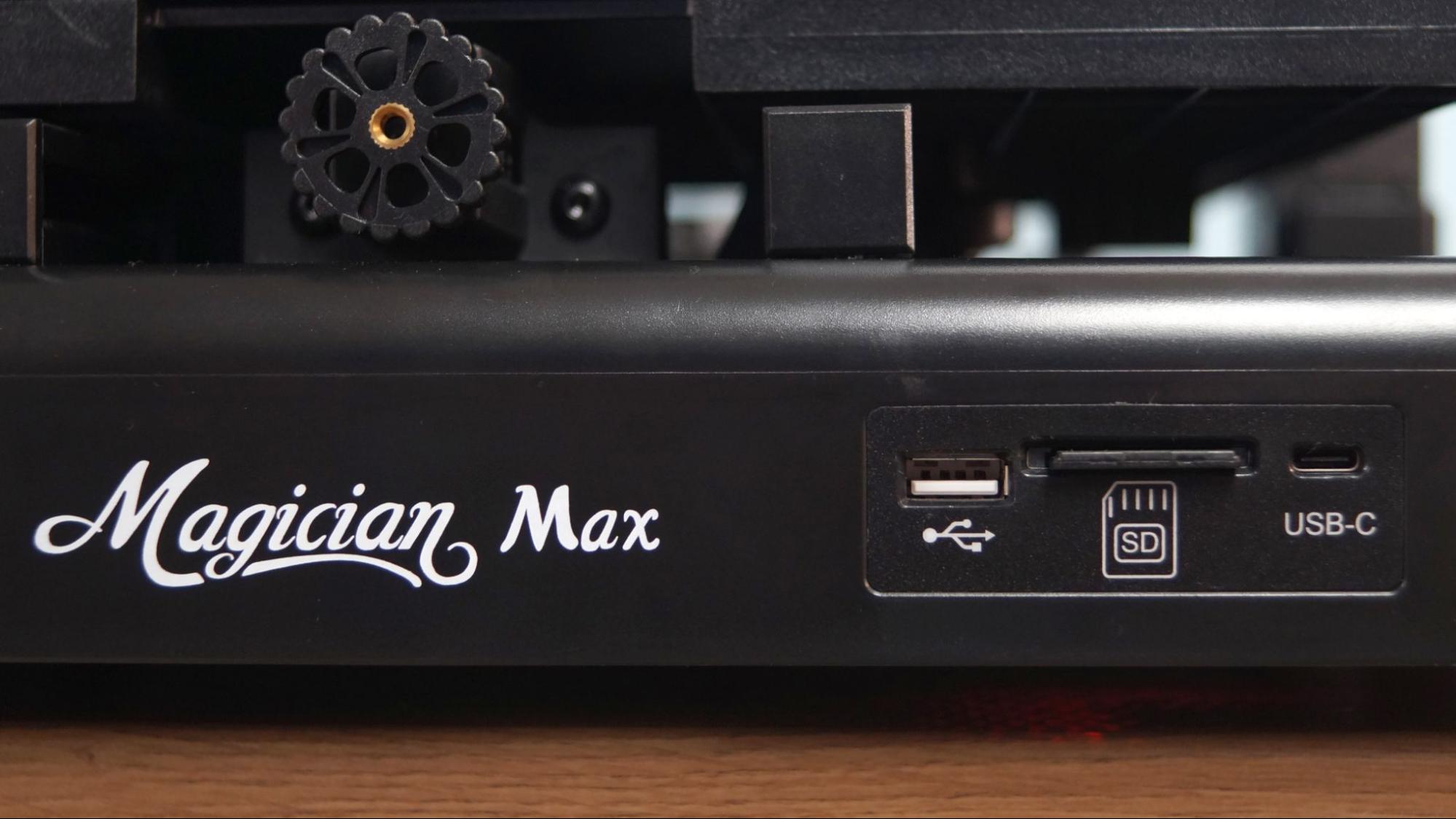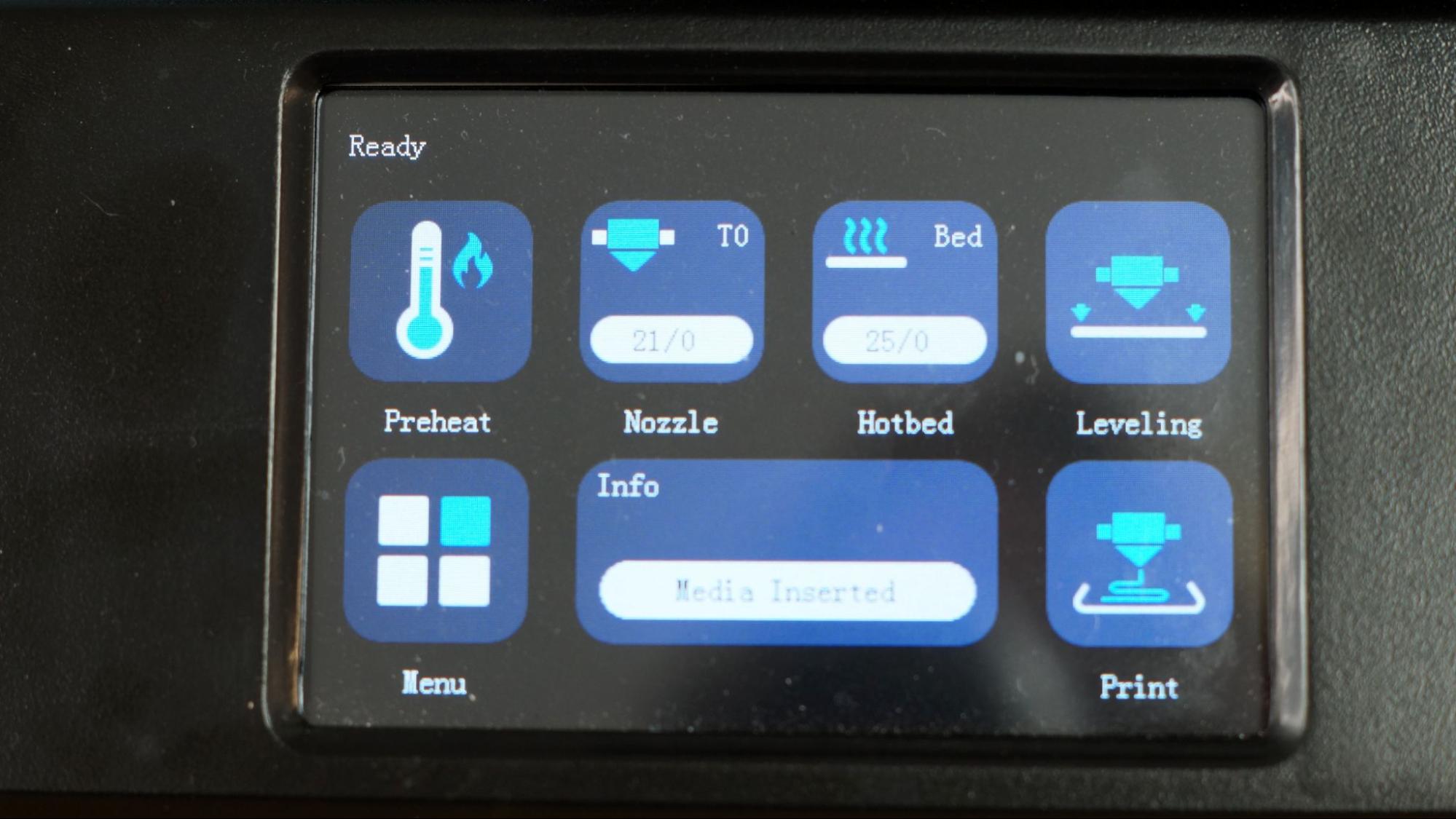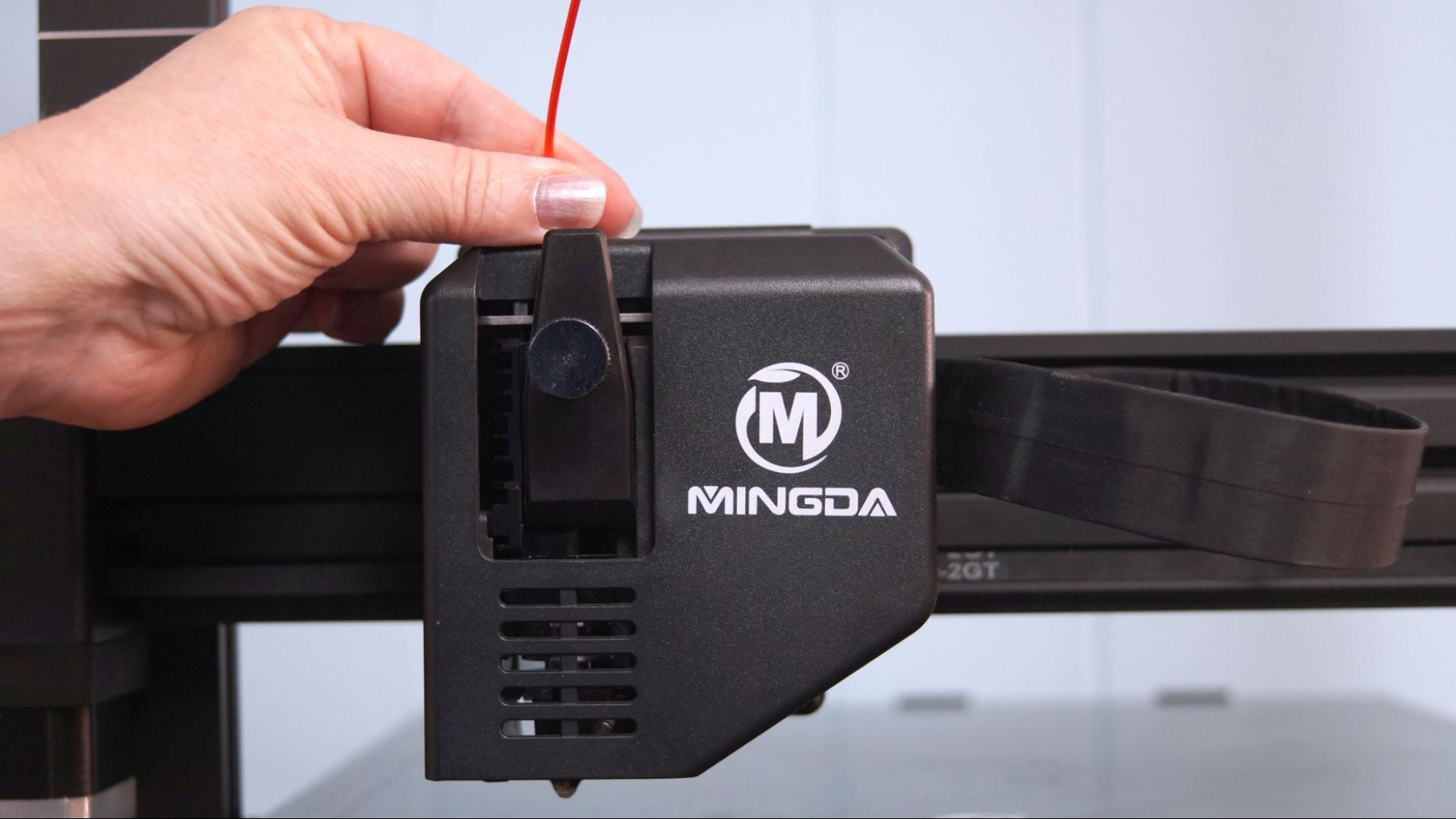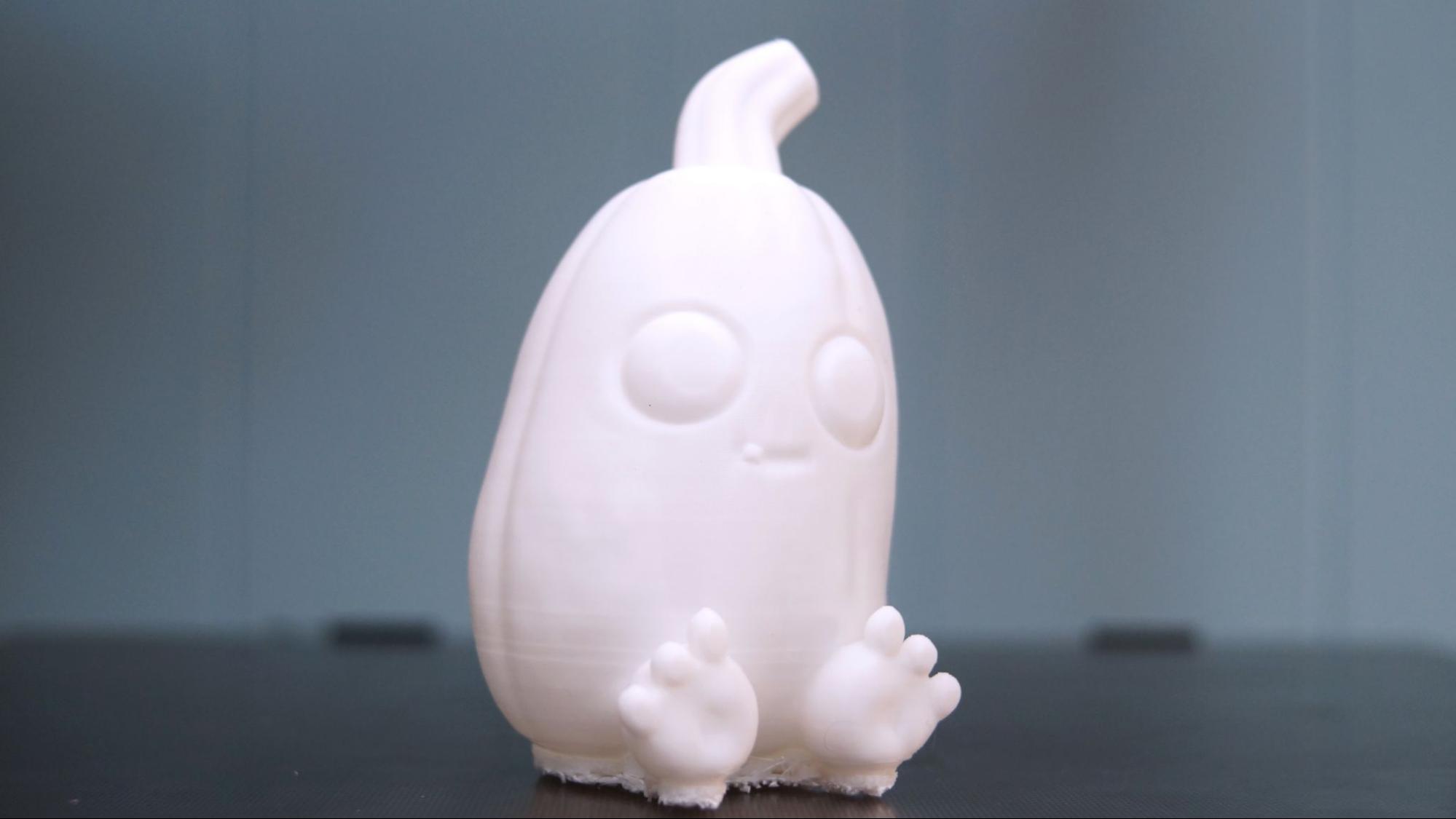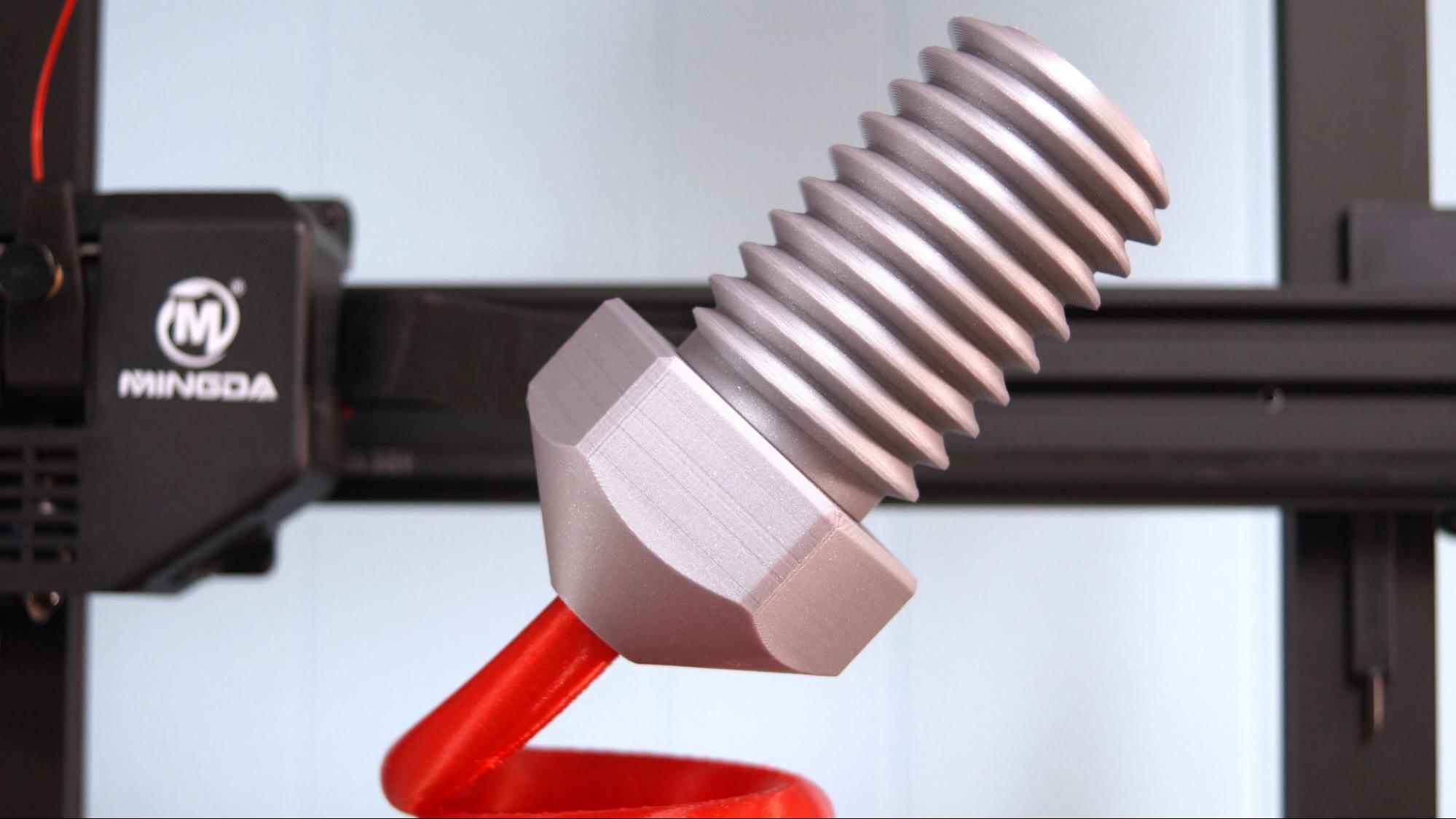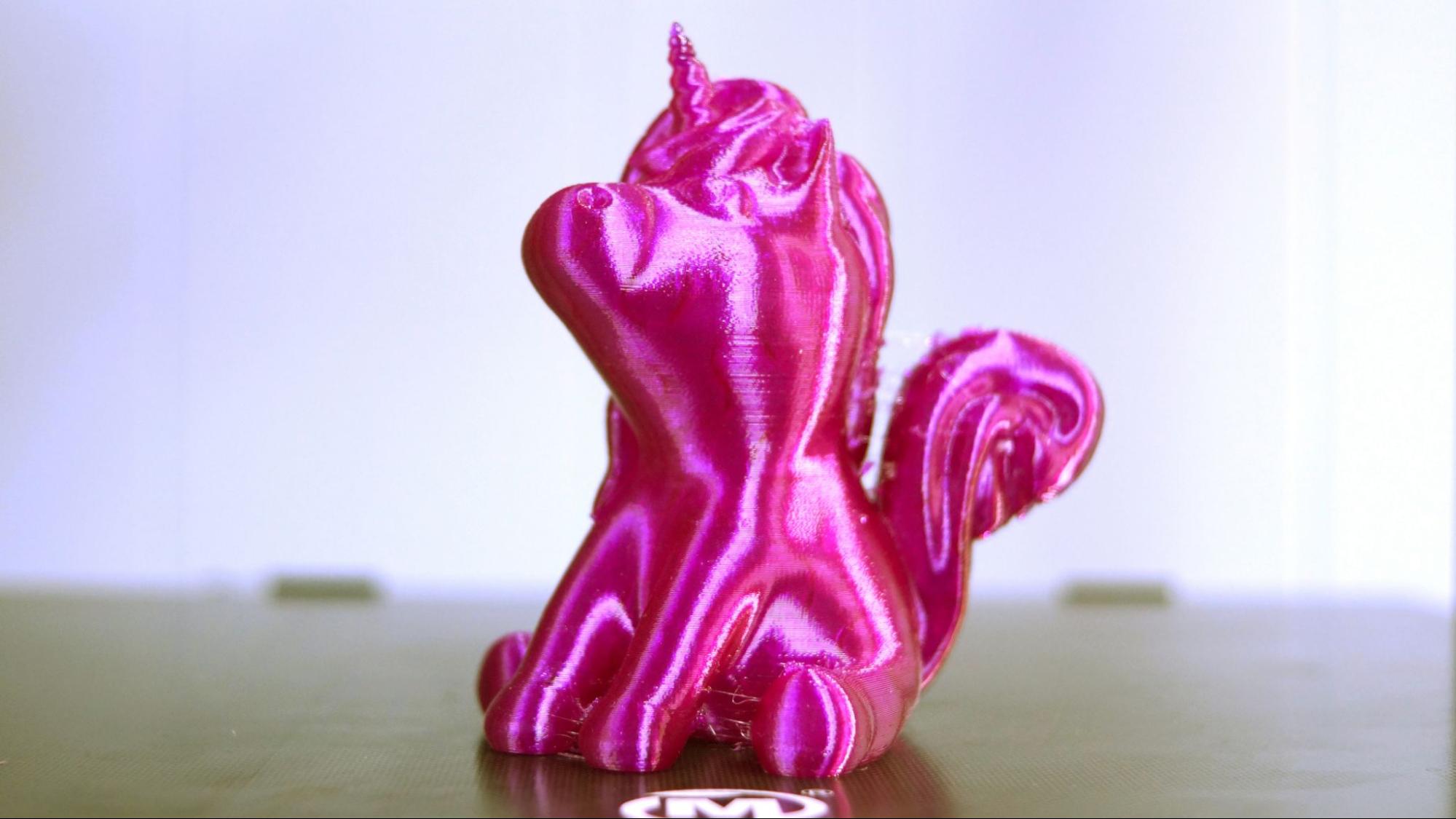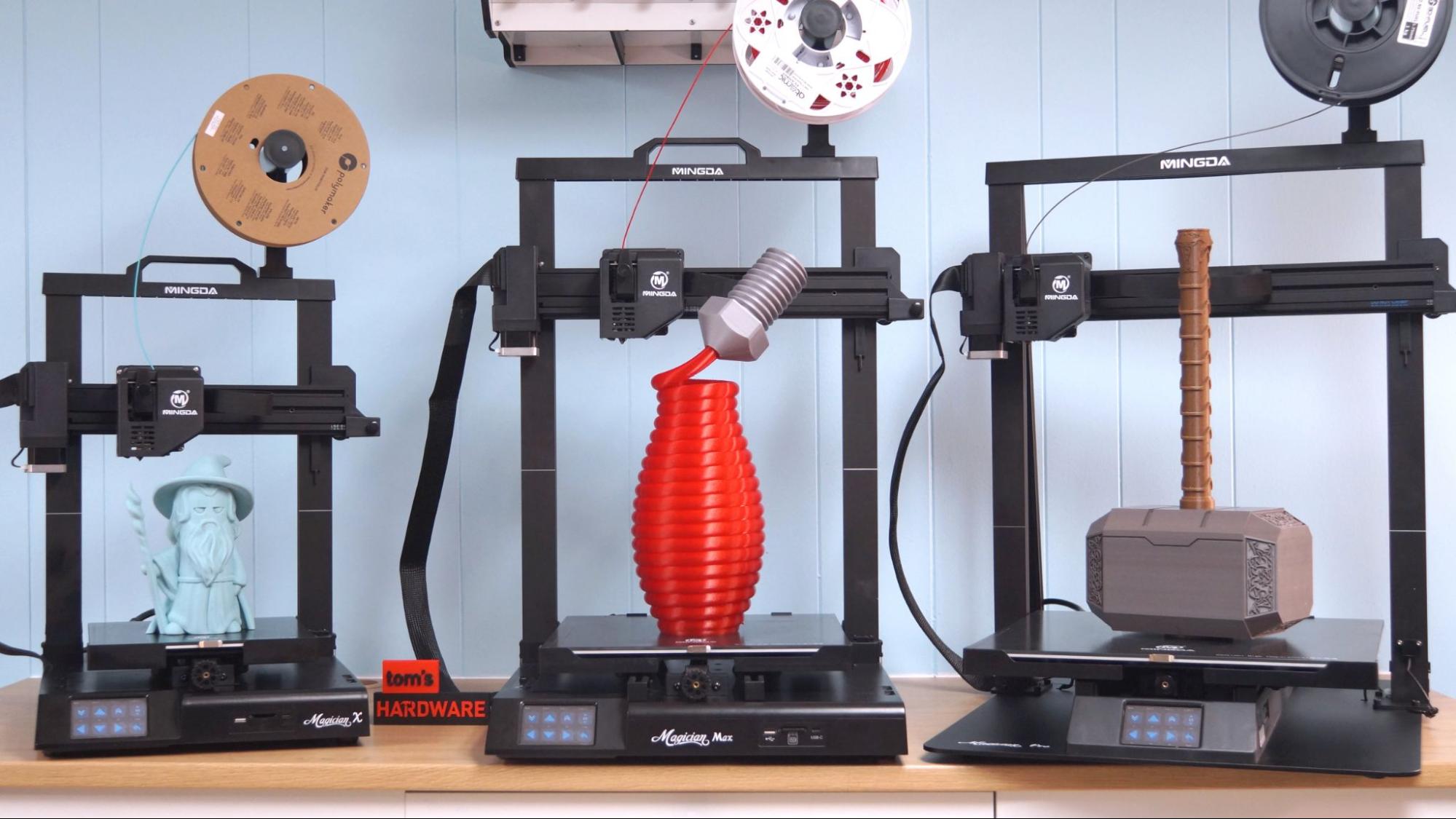Tom's Hardware Verdict
Mingda’s Magician Max is a reasonably sized large format printer with deluxe features and a super sticky build plate.
Pros
- +
Auto bed leveling
- +
Direct drive
- +
Full size SD card
- +
Easy assembly
- +
Quiet operation
Cons
- -
Too-sticky build surface
- -
Difficult to upgrade
Why you can trust Tom's Hardware
When you want a bit more build volume, but you don’t want to throw your back out on a super sized 3D printer, the Mingda Magician Max is here for you.
This printer has a 320 x 320mm build plate, 10mm more than a Creality CR10, which we consider the baseline for large format printers. It’s also the middle sibling of the Mingda’s Magician line up, sitting between – and practically identical to – the smaller Magician X and the oversized Magician Pro.
All three have the exact same direct drive hotend, easy-to-use bed leveling system and super sticky coated glass build plate. Like the Magician Pro, it has a belt-synced dual Z axis and a wide Y axis for greater stability.
I had the Magician Max out of the box, leveled and printing in about 20 minutes. That makes it easier to use than many of the best 3D printers.
Specifications: Mingda Magician Max
| Machine Footprint | 650 x 586 x 675 mm (25.5 x 23.0 x 26.5 inches) |
| Build Volume | 320 x 320 x 400 mm (15.7 × 15.7 × 15.7 inches) |
| Machine Weight | 10 kg (22 lbs) |
| Material | PLA/PETG/TPU/ABS |
| Extruder Type | Direct Drive |
| Nozzle | .4mm (Interchangeable) |
| Build Platform | Coated Glass, heated |
| Filament Runout Sensor | Yes |
| Bed Leveling | Automatic touch sensor |
| Connectivity | SD card, USB stick, USB-C |
| Interface | Color LED touch screen |
Mingda Magician Max: Included in the box
The Magician Max comes with tools for assembling the printer and a few extras like a spare nozzle, an extra piece of Teflon tube, and a full sized SD card. A small sample of white PLA is included for your first test print.
The SD card has a PDF copy of the manual, a copy of Cura 4.13 and one pre-sliced .gcode model to use for testing.
The printer does not come with a scraper to remove prints or snips to cut filament, but these are easily found at your local hardware store. This is my favorite scraper if you’re looking for something extra nice.
Get Tom's Hardware's best news and in-depth reviews, straight to your inbox.
Design of the Mingda Magician Max
The Magician Max looks very similar to the other Mingda printers in the Magician line up. It has a boxy design that looks like a finished appliance rather than a DYI kit. The wide base holds the power supply, motherboard and a hidden tool box for stashing your wrenches and spare nozzle.
Like the bigger Magician Pro, this one has dual Z rods that are synced with a belt at the top. The Y axis is extra wide, giving it a steady foundation. Cable manage is tidy, with ribbon cables wrapped in black mesh from the base to the X gantry, then a fabric wrapped ribbon cable completes the journey to the toolhead.
I was really happy to find slots for both a full sized SD card and a USB stick – I wish more 3D printers would use this system.
Other small touches make the Magician Max more user-friendly. It has belt tension knobs when you need to tweak the tightness, a frame that cradles the glass plate with just one clip and an easy-to-navigate graphic menu on the interface.
The auto leveling system physically taps the bed at 16 points, and I never needed to adjust the Z height for PLA. PETG requires a bit less squish, so I did use baby steps to compensate for materials as needed.
My biggest pet peeve is the coated glass, which is the same on all three Mingda machines. It holds incredibly well – fantastic for print adhesion – but refuses to give up the goods when the print is done. PLA and PETG comes off with a little prying, but TPU needs much persuasion.
Assembling the Mingda Magician Max
The Magician Max follows the pleasant industry trend of 90% pre-assembled printers. The gantry slides on a bracket on the baseplate and is held in place with four bolts – two on each side. There’s no need to tip the printer over to fit bolts up through the bottom.
Electrical connections are easy to sort out, with most plugs being an inch or two from their connection point.
Once everything is connected, it’s a good idea to check your bolts, wheels and belts for excessive wiggle. If you find any loose wheels, these can be easily tightened with the provided wrench on the eccentric nuts.
Normally, the final step when assembling any 3D printer is to flip the power supply switch. The Magician Max has done away with this step – it's already set for US power. If you’re feeling paranoid, you can find the switch inside the tool compartment, hidden behind a piece of foam.
Leveling the Mingda Magician Max
The Magician Max has an auto leveling system where the nozzle physically touches the glass plate. The printer automatically warms up before leveling, removing any worry that the plate could expand or warp going from cold to hot.
To level the printer, select Level from the main menu. After the printer warms up, it will tap 16 points around the bed. I didn’t need to adjust the Z height after leveling, but there is a command if you need to tweak the settings.
Loading Filament on the Mingda Magician Max
Loading this direct drive is very straightforward. Select preheat, then tap the type of filament you’re using. The Magician Max heats quickly, so you won’t be left waiting long. Insert the filament into the top loading hole on the drive. Next, tap the load button on the screen. Keep the speed set at normal and increase the amount advanced to 10mm.
There’s no reverse on the Magician Max’s drive, so you can only go forward. When you want to change colors, simply snip off the filament and advance the drive 30mm. Place the next filament into the hole and continue forward until you see a different color coming out of the nozzle.
The lack of reverse may seem annoying, but after testing all three Mingda Magicians I’ve yet to experience a clogged nozzle. Keeping the filament moving forward seems to avoid gumming up the works on this style of direct drive.
Preparing Files / Software for Mingda Magician Max
The Magician Max comes with a copy of Cura 4.13.1 and directions on how to set up a custom profile. The same directions apply to using PrusaSlicer if you like.
After I received the Magician Max, Mingda announced that all three of their newest printers – the Magician, Magician Pro and Magician Max – have been submitted to Cura. They are available on Cura 5 and up. This greatly simplifies setting up your printer and ensures that you’re starting with a profile tuned to your machine.
Printing on the Mingda Magician Max
I started off with the pre-sliced test print, a pumpkin monster, using the provided sample of white PLA. The print included a raft, which did not come off. The print was fairly clean, but showed some Z banding in the lower part of the pumpkin.
I wanted to print something big to show off the Magician Max’s build volume. The Printception Small Vase by Make Anything was just the print once I sized it up 200%. I used Atomic Golden Blood Diamond Translucent PLA at a .2mm layer height and 65mms. It took 36 hours and 9 minutes to print.
Here’s a close up of the Printception’s nozzle, printed separately in Prusament PLA Galaxy Silver .2mm layer height, 65mms and also at 200%. It took 8 hours and 38 minutes to print. You can see the Z banding on the flat sides of the nozzle, which was printed in two parts without supports.
I moved on to PETG and printed this wonderful Fairy Door by Jukka Seppanen in Teal PolyMaker PolyLite PETG. It took 5 hours and 14 minutes at a .2mm layer height. The textured nature of the print hides any Z banding, and you can only see a few loops at the top of the door where some support may have helped out.
Despite having a direct drive, TPU only performed moderately well. I printed this Powder Puff Unicorn by Chao Core Tech in Matterhackers Build Series Translucent Puprle TPU, using a 40mms and 2mm layer height. You can see there’s still stringing between the tail and backside and also between the feet. Otherwise this is a nice support free print, the strings would be easy to remove.
Bottom Line
Retailing at $479, the Mingda Magician Max is a 3D printer with more printing space than average that doesn’t require any upgrades. Like its siblings, the Magician Max is designed as a finished product that’s quick to set up and simple to use. The only thing you’ll need to swap out on this machine is the brass nozzle when it’s worn out. This is not a machine for modders; this is for people who want to get right making cool stuff.
The easy loading direct drive handles materials exceptionally well and is the kind of low maintenance extruder a beginner needs and experience users enjoy. The auto leveling is accurate and fuss free – another feature that removes roadblocks from your 3D printing journey.
Mingda could definitely improve the glass bed – it’s way too sticky and refuses to give up the goods even when ice cold. A flex plate would be a welcome addition to the lineup. I do appreciate that the build plate is only held down with one clip, so it’s extremely easy to remove for serious scrapper action and clean up.
If you’re looking for a slightly cheaper 3D printer with the same build size and a less sticky build plate, check out the Anycubic Kobra Plus. Priced at $439, it’s an Editor’s Choice and our pick for Best Large Format FDM Printer.
MORE: Best 3D Printers
MORE: Best Resin 3D Printers
MORE: Best Filaments for 3D Printing

Denise Bertacchi is a Contributing Writer for Tom’s Hardware US, covering 3D printing. Denise has been crafting with PCs since she discovered Print Shop had clip art on her Apple IIe. She loves reviewing 3D printers because she can mix all her passions: printing, photography, and writing.



